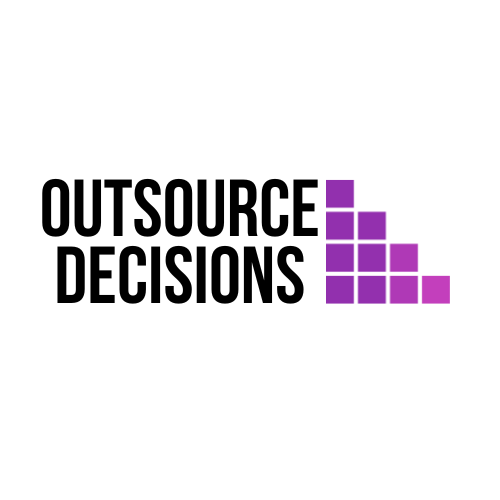Have you ever faced a tough choice? One where you knew the “right” thing to do, but it felt difficult or uncomfortable? Maybe you had to decide whether to speak up about something you saw at work. Or perhaps you wrestled with being fully truthful in a situation.
If so, you’ve encountered an ethical dilemma. These situations test our moral compass and values. They force us to think critically about consequences and what matters most. Handled poorly, ethical lapses can profoundly impact lives, reputations, and society.
While ethical issues often lack clear “right” answers, having a process to work through them systematically is invaluable. This guide explores ethical decision-making – what it is, why it’s crucial, key principles to apply, and a 6-step framework to navigate tough choices with integrity.
What is Ethical Decision Making?
Ethical decision-making refers to the process of evaluating and choosing among alternatives in a manner consistent with ethical principles and values. At its core, it involves:
- Recognizing situations with ethical implications
- Analyzing the details and complexities through an ethical lens
- Exploring different viewpoints and courses of action
- Making a choice that aligns with moral principles like honesty, fairness, and doing no harm
It requires critical thinking to assess right vs. right situations objectively. The focus isn’t just on choosing between “right” and “wrong,” but determining the most ethical option when several viable paths exist.
Why is Ethical Decision Making Important?
Beyond just feeling like the “right” thing to do, ethical decision-making is vital for several reasons:
Maintains Public Trust
Ethical lapses by individuals, businesses, or organizations can severely undermine trust, credibility, and reputation. Consistently ethical conduct builds public confidence.
Promotes Accountability
A systematic approach to ethical reasoning demonstrates a commitment to values and taking responsibility for choices and actions.
Mitigates Risks
Unethical behavior opens the door to legal issues, penalties, and other costly consequences. Ethical decision-making processes reduce exposure.
Supports Positive Culture
Workplaces and communities with shared ethical values experience higher employee engagement, stronger teamwork, and better retention.
Drives Better Outcomes
Factoring in multiple stakeholder perspectives and potential ramifications leads to more balanced, sustainable decisions.
Key Principles of Ethical Decision-Making
Several core principles form the foundation of most ethical frameworks:
Respect for Persons
This principle revolves around respecting the autonomy of individuals and their right to make choices based on their own values and beliefs. It means:
- Protecting and supporting people’s independence
- Safeguarding individuals’ privacy
- Treats everyone with dignity
- Getting informed consent before taking actions that impact others
Beneficence
The principle of beneficence refers to doing good, maximizing benefits, and promoting the well-being of people and society overall. It involves:
- Preventing harm, exploitation, deception, or anything that causes unnecessary harm
- Removing conditions that will cause harm
- Bringing about positive results or outcomes
Justice
The principle of justice centers on treating people fairly and equitably. It connects to ideas like:
- Equal treatment and opposing discrimination
- Reasonable distribution of risks, costs, and benefits
- Making decisions impartially, without bias or favoritism
Integrity
Integrity refers to unwavering adherence to ethical principles, values, and moral convictions – even when it’s challenging. It means:
- Acting with honesty, truthfulness, and moral courage
- Taking responsibility and accountability for choices
- Aligning words and actions based on core ethical beliefs
A Framework for Ethical Decision-Making
When facing an ethical dilemma, this 6-step process can guide rigorous analysis and sound decision-making:
Step 1: Gather the Facts
Collect as much relevant data as possible about the situation. Understand the timeline of events, who was involved, applicable policies or laws, and the broader context.
Step 2: Identify the Ethical Issues
Pinpoint where the ethical tensions and conflicts lie. What values, duties or moral principles are being challenged or violated? Name the specific ethical dilemmas.
Step 3: Consider the Stakeholders
Identify all individuals and groups who could be impacted by the possible decisions. Explore their perspectives, rights, and potential consequences they may face.
Step 4: Explore Possible Courses of Action
Generate multiple alternative solutions or paths forward. Brainstorm creative options to address the ethical issues fully.
Step 5: Evaluate and Choose
Rigorously assess each alternative against the ethical principles and duties involved. Which option produces the most positive outcomes while upholding ethics?
Step 6: Implement and Reflect
Once a path is chosen, implement it with care and vigilance. Afterward, review the results – were ethical obligations fulfilled? Capture lessons for the future.
Challenges in Ethical Decision Making
While frameworks provide guidance, ethical issues are inherently complex due to factors like:
Conflicts Among Principles Upholding one ethical principle (like respecting autonomy) may violate another (like avoiding harm). These need to be resolved.
Uncertainty and Incomplete Information
Rarely are all details clear-cut. Having imperfect or evolving information complicates analysis.
Individual Biases and Perspectives People have diverse backgrounds and moral philosophies that influence their ethical judgments.
Pressure From Conflicts of Interest Personal, professional, or financial interests can unconsciously sway ethical reasoning.
Procedural Limitations Even robust processes have shortcomings. Mistakes or new factors may emerge later.
Ethical Decision-Making in Practice
To illustrate the process in action, let’s examine an example dilemma:
You are a journalist working on an investigative report about potential corruption within your city’s government. In your research, you uncover evidence suggesting the mayor has been accepting bribes from local real estate developers. However, your primary source for this information is an anonymous whistleblower. You worry that without revealing their identity, the credibility of your reporting could be challenged. At the same time, exposing the source could jeopardize their safety and ability to continue providing insider information.
Here’s how you could approach this using the 6-step framework:
1. Gather Facts What provable information do you have? What are the specific allegations? Any history of similar issues? Policies on protecting sources?
2. Identify Ethical Issues Competing principles like transparency vs. confidentiality of sources. Exposing wrongdoing vs. potential to cause harm. Public’s right to know vs. source’s privacy.
3. Consider Stakeholders
The whistleblower, the public, the mayor, city officials, developers, other journalists/media, etc.
4. Explore Options A) Publish story with anonymous sourcing B) Reveal source’s identity C) Delay publishing until additional evidence surfaces D) Hand over information to authorities to investigate
5. Evaluate Alternatives
Analyze how each option impacts ethical obligations and core principles. Which best balances integrity, minimizes harm, and serves the greater good?
5. Implement & Reflect
Implement the chosen solution carefully and responsibly. If publishing with anonymous sources, ensure rigorous verification and strong justification. If handing to authorities, provide a clear record of evidence.
After the fact, evaluate the outcomes and decisions made. Were ethical obligations ultimately upheld? What lessons can be applied going forward? A genuine commitment to ethical integrity means continually revisiting and refining practices.
TL;DR
Ethical decision-making is the process of systematically analyzing situations with moral implications and choosing a course of action aligned with ethical principles like honesty, fairness, and avoiding harm.
It’s vital for maintaining public trust, promoting accountability, mitigating risks, building a positive culture, and reaching better outcomes that account for diverse stakeholders.
Core ethical principles include respect for persons, beneficence, justice, and integrity. When facing tough choices, follow a framework:
- Gather facts
- Identify ethical issues
- Consider stakeholders
- Explore options
- Evaluate and decide
- Implement and reflect
While challenging due to factors like conflicting principles and incomplete information, having a rigorous ethical decision-making approach is essential for navigating complex modern dilemmas responsibly.
Q&A
Q: Isn’t ethics just a matter of personal values and opinion?
A: While individuals can have different moral philosophies, ethical principles like honesty, avoiding harm, and treating people fairly are widely accepted across cultures. Ethical decision-making uses reason and impartial analysis to determine which choice best upholds these shared human values in any given situation.
Q: Why should I follow an ethical framework if it may create more personal or professional hardship?
A: In the short term, upholding ethical standards can create difficult trade-offs. However, maintaining integrity by doing the right thing builds credibility, trust, and a positive reputation over time. Ethical lapses often create far greater personal, legal, and professional consequences down the road.
Q: What if I disagree with the ethical principles outlined here?
A: These core ethical principles like respect, beneficence, justice, and integrity are foundational to most moral philosophies and worldviews. However, different frameworks can place more emphasis on certain principles based on their values. The key is having a defined ethical lens to analyze and resolve dilemmas systematically.
Q: How can I apply ethical decision-making if my company or industry doesn’t prioritize it?
A: While challenging, it’s important to uphold personal integrity regardless of the situation. Leading with ethics can positively influence workplace culture over time. Additionally, many industries have professional codes of conduct that can be referenced. In egregious cases, proper whistleblowing channels exist to escalate ethical violations.





